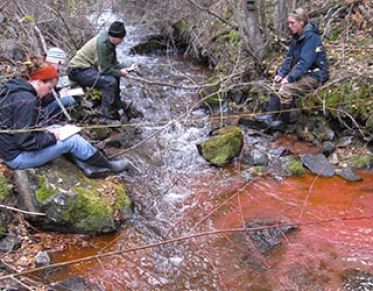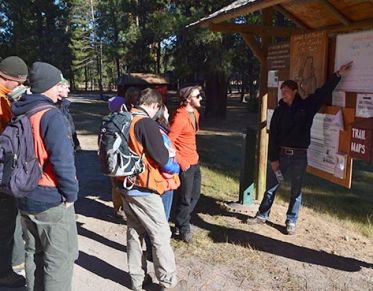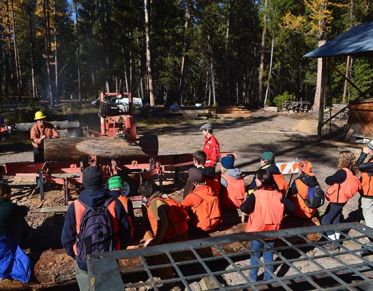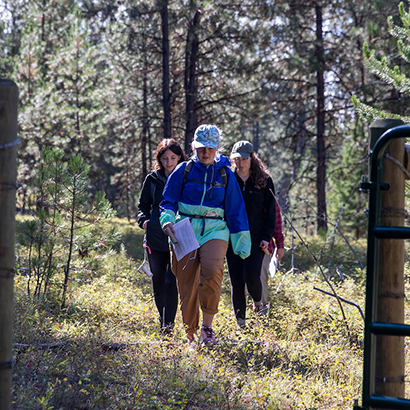Education



Lubrecht Experimental Forest is a field laboratory for students at the W.A. Franke College of Forestry and Conservation. Classes learn mensuration, forest ecology, wildlife and water measurements, prescribed fire, and forest protection in field trips and field courses at Lubrecht.
Lubrecht's second-growth forest is typical the type of forest future foresters will manage and the variety of timber age classes offers students wide experience in forest operations such as planting, thinning, weeding, and pruning.
Until 1969, spring camp was mandatory for forestry students and possible because the university was on a quarter-term system. In 1976, spring camp returned when Professor Nellie Stark created the Resource Evaluation Program, which gave students a chance to learn theory and practice in the art of forest resource evaluation. Students worked in three-person crews, learning about selected 20-acre forest sites, quantifying its logging and land use history, vegetative patterns, wildlife and other resources. In the process, students learned surveying and timber cruising. Researchers at the College of Forestry and Conservation use the forest as a study site for many research projects.
Recent studies include ecosystem studies to understand plant and animal ecological relationships and hydrological studies to look at ground and surface water recharge. Numerous silvicultural studies have been installed on the forest to measure effects of stand management treatments on timber production and other multi-resource values. Other research taking place at Lubrecht is expanding knowledge in ecology, genetics, fire, timber management, and forest recreation.
The quarter spent at Lubrecht was highly valued by many of the students, but it was discontinued when the university changed to semesters in 1992. Special courses and field laboratories are regularly held at the forest. In 1971, one section of 640 acres was given to the student Forestry Club to manage. Known as Section 13, the students are responsible for management decisions on recreation, fire, timber, range, water, soils, and wildlife.
